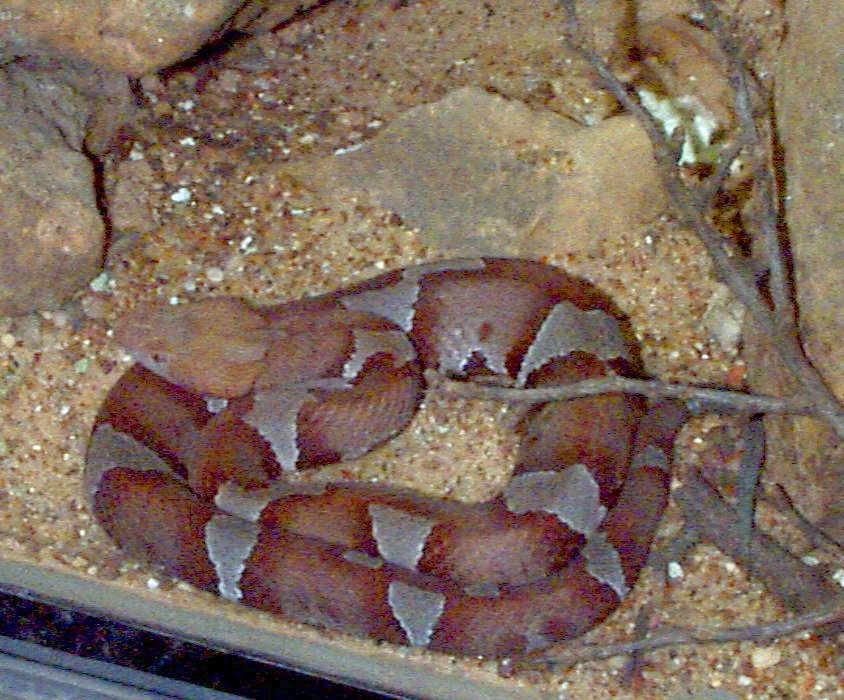Source
Materials and Related Links:
 BOOKS
AND ARTICLES: BOOKS
AND ARTICLES:
Animal Behaviour,
"Body size and agonistic experience affect dominance and mating success
in male copperheads" July 97, Vol.54, issue 1 pg.213
Animal Behaviour,
"Head lifting by female copperheads, Agkistrodon contarix, during courtship:
potential mate choice" Feb. 96, Vol.51, issue 2 pg.367
Pamela Forey and
Cecilia Fitzsimons: Reptiles and Amphibians , Pub. BONANZA BOOKS.
1987
Links:
Ohio
Division of Wildlife
The
Copperhead Pages
Copperhead
Reptiles-Copperhead

WhoZoo
Home
Snakes
at the Fort Worth Zoo
Animal
Index
|